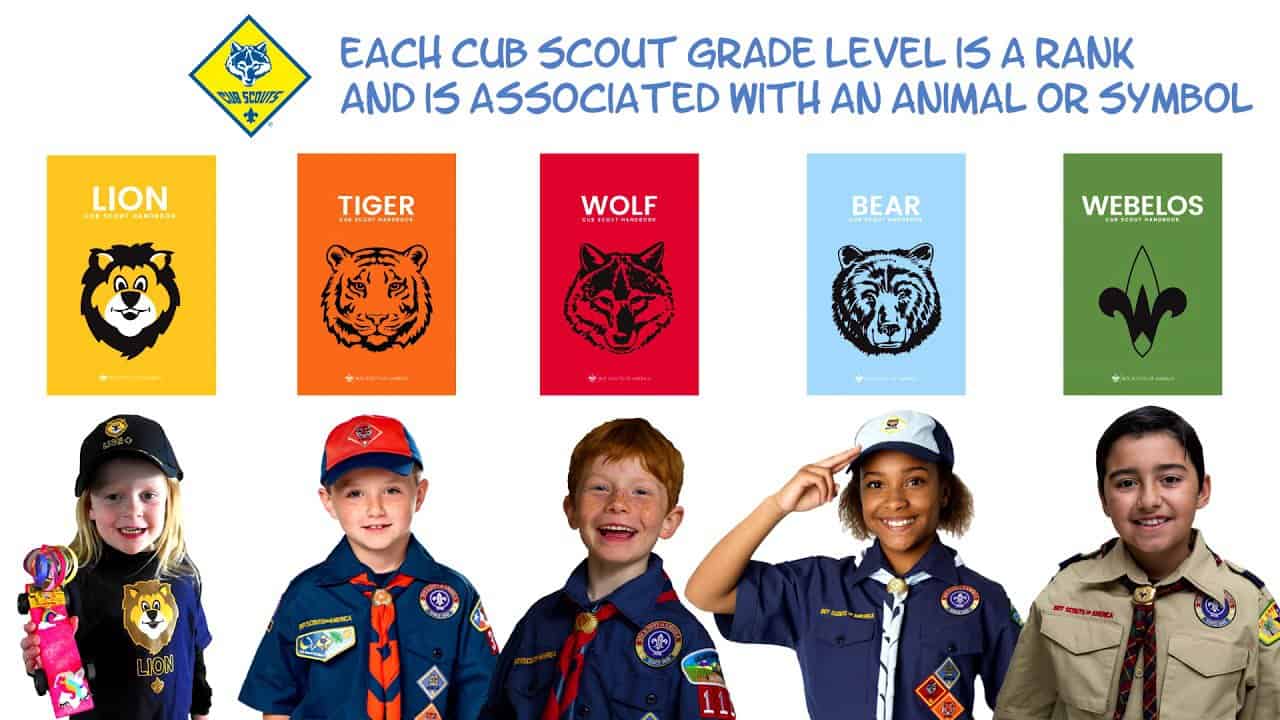Joining the Adventure: A Parent’s Guide to Cub Scout Ages
Welcome to the exciting journey of Cub Scouts! As parents, guiding your child through the adventurous path of scouting is both a privilege and a delightful experience. You may be wondering, “What is the right age for my child to join Cub Scouts?” Fret not! In this comprehensive guide, we’ll explore the age groups, the activities designed for young scouts, and the benefits of starting this adventure at the right time.
Understanding Cub Scout Age Groups
First things first: Cub Scouts is a program developed by the Boy Scouts of America (BSA) for young children that aims to build character, citizenship, and personal fitness. The program is divided into grade-based levels that offer age-appropriate activities and learning opportunities:
- Lion Scouts: Kindergarten (5-6 years old)
- Tiger Cubs: First-grade (6-7 years old)
- Wolf Scouts: Second-grade (7-8 years old)
- Bear Scouts: Third-grade (8-9 years old)
- Webelos Scouts: Fourth-grade (9-10 years old)
- Arrow of Light Scouts: Fifth-grade (10-11 years old)
Each level builds on the last, providing a seamless transition and developmentally appropriate challenges for your child. By aligning with the school grade level, it also makes it easier for you as a parent to remember where your child fits within the structure.
Why Start at the Recommended Age?
Engaging in Cub Scouts at the recommended ages offers a myriad of benefits for child development. Here’s why starting at the correct age is essential:
- Fosters Early Development: The Cub Scout program is designed to cater to the cognitive, social, and ethical development of children. By starting at the recommended age, your child will be exposed to activities that are specifically tailored to their stage of growth.
- Promotes a Sense of Belonging: Being part of a den (a small group within the larger Cub Scout pack) allows young scouts to connect with their peers, providing a powerful sense of community and friendship.
- Encourages Progression: Through the advancement system, scouts earn recognition as they acquire new skills and accomplish tasks, which promotes a growth mindset.
Now that you know the importance of the right Cub Scout age, let’s dive deeper into what activities and opportunities your child will enjoy at each level!
Activities Customized for Each Cub Scout Level
Scouting is all about learning by doing. Here’s a sneak peek of what each Cub Scout rank involves:
Lion Scouts start with exciting introductory activities that ease them into scouting. Lions learn the basics of teamwork and participate in fun projects that boost their confidence and curiosity.
Tiger Cubs embark on more structured adventures that begin to teach them outdoor skills, community engagement, and the core values of Cub Scouts such as honesty, respect, and responsibility.
Wolf Scouts deepen their understanding of the natural world and learn skills that encourage independence and problem-solving. They start to take on more responsibilities within their dens, further building their leadership potential.
Bear Scouts dive into a broader range of activities that challenge them to think critically and develop more advanced outdoor skills. They engage in community service projects that instill the essence of being a good citizen.
Webelos Scouts prepare for the transition to Boy Scouts. They focus on earning activity badges that cover a wide range of interests and skills, from science and engineering to arts and sports.
Arrow of Light Scouts reach the pinnacle of Cub Scouting. They take on the most challenging tasks and expeditions, hone leadership skills, and prepare for the crossover to Scouts BSA with confidence and pride.
Scouting is a guided path for your child to explore various interests, develop new skills, and gain invaluable life lessons. The next segment of our guide will delve into the specifics of each Cub Scout rank, so you can ensure your child is getting the most out of their scouting experience!

5 Essential Things Parents Should Know When Preparing for Cub Scout Age
As you prepare to introduce your child to the world of Cub Scouting, here are five essential elements to keep in mind:
- Start with the Basics: Before your child’s first meeting, acquaint them with the Cub Scout Oath and Law. These are foundational principles that guide all scout activities and instill a strong moral compass. Simple discussions about what these principles mean can be a great start.
- Choose the Right Pack: Scout Packs can vary in atmosphere and activities offered. Attend several pack meetings or events to find the right fit for your child, ensuring their experience will be positive, nurturing, and aligned with your family’s values and schedule.
- Get Involved: Your involvement as a parent is crucial to your child’s scouting experience. Volunteering, participating in events, and staying engaged with your child’s progress helps reinforce the lessons learned and the importance of commitment.
- Uniforms and Gear: A Cub Scout uniform is more than just clothing; it’s a symbol of pride and belonging. Ensure your child has the proper uniform and understands its significance. Additionally, start gathering basic outdoor gear that will be necessary for camping and other activities.
- Encourage Independence: Scouting is an incredible opportunity for your child to gain independence and self-confidence. Encourage them to take charge of their handbook, keep track of their own achievements, and organize their scouting materials.
Empowered with this knowledge, you’ll be ready to support your child as they take their first steps on the Cub Scout trail. Up next, let’s break down the exciting activities and opportunities your child will encounter at each rank of their Cub Scout journey!
Cub Scout Rank Breakdown: What to Expect at Each Level
Every Cub Scout rank is filled with adventure and learning designed to match your child’s developmental stage. Here’s an overview of what you can expect at each level:
Lion Scouts (Kindergarten)
Lions explore the scouting world through stories, games, and crafts that introduce them to the basics of Cub Scouts. They start earning badges with simple, fun activities that teach them about teamwork and the world around them.
Tiger Cubs (First Grade)
Tiger Cubs take their first steps into the great outdoors. Expect your child to learn about nature, start basic camping skills, and get involved in community service projects like food drives or park clean-ups.
Wolf Scouts (Second Grade)
Wolf Scouts begin to work on more complex badges and achievements. Activities may include growing a garden, learning about wildlife, and contributing more significantly to community service.
Bear Scouts (Third Grade)
Bear Scouts undertake more independent tasks. They will learn about woodworking, build models, and start to explore areas of personal interest, such as space, robotics, or the arts. They also start preparing for extended outdoor adventures.
Webelos Scouts (Fourth Grade)
As Webelos, your child will earn activity pins and delve deeper into specific topics. This rank is a transitional period, helping your child prepare for Boy Scouts with activities that require more responsibility and self-reliance.
Arrow of Light Scouts (Fifth Grade)
The Arrow of Light is the highest Cub Scout rank. Here, your child will master their scouting skills through challenging activities that might include overnight camping, hiking, and community leadership projects.
Remember, each rank in Cub Scouts is designed to teach your child new skills, help them find their passions, and foster their growth as an individual and as part of a team. Enjoy this special time, and watch your child soar like an eagle on their Cub Scout journey!
See more great Things to Do with Kids in New Zealand here. For more information see here
Disclaimer
The articles available via our website provide general information only and we strongly urge readers to exercise caution and conduct their own thorough research and fact-checking. The information presented should not be taken as absolute truth, and, to the maximum extent permitted by law, we will not be held liable for any inaccuracies or errors in the content. It is essential for individuals to independently verify and validate the information before making any decisions or taking any actions based on the articles.




